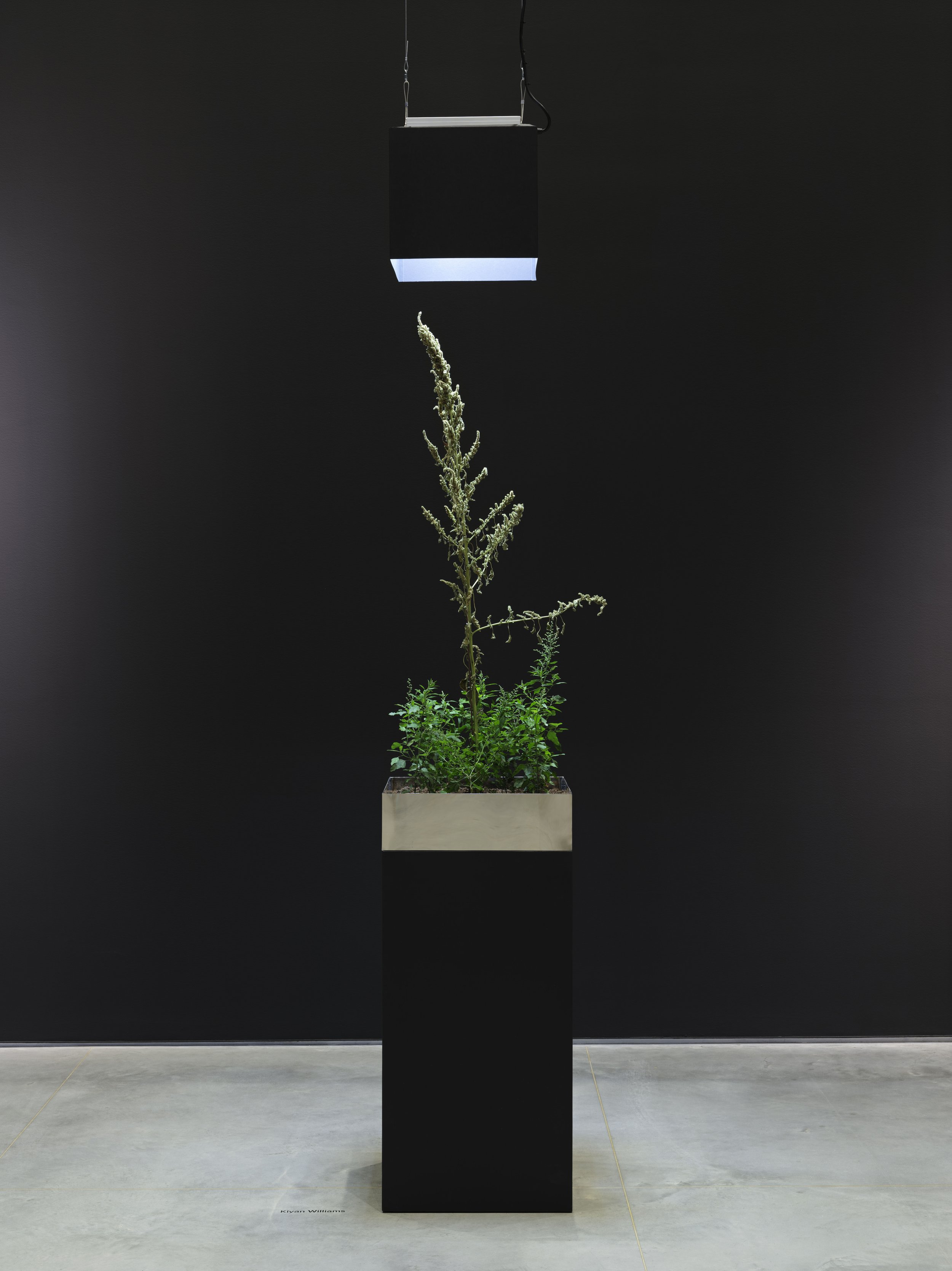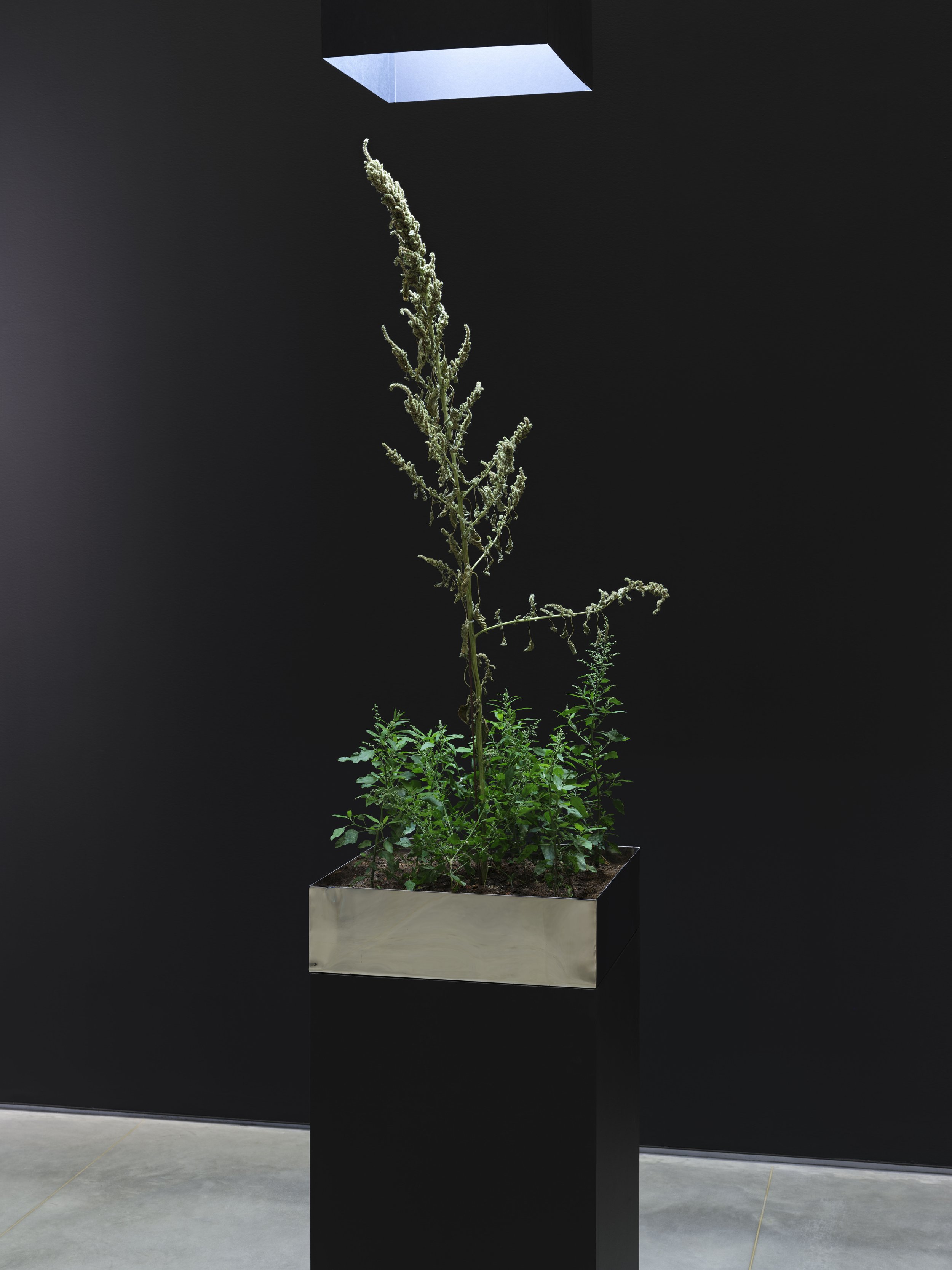In Defense of Wild Plants, 2022
In Defense of Wild Plants reclaims wild plants, including Amaranth, that grew at the base of the artist’s public sculpture and were uprooted by the groundskeeper because they were deemed a weed. Amaranths grow in disturbed, nutrient-deprived soils and often populate the vacant lots and sidewalks of cities. In much of the Global South Amaranths are cultivated as a food source; in the Caribbean, for example, its leaves are the main ingredient for callaloo.
The plants are installed in a mirror-finish container on a pedestal, occupying the realm of art object, and are cared for by the gallery staff. In Defense of Wild Plants is a small gesture that intervenes on the protocols of disposability, and an attempt to shift what gets cared for (cultivated), and what gets thrown away. Despite the artist’s optimism, they consider that the conditions of a gallery are not the most hospitable for life to flourish, and that these plants might meet their original fate. That care might be more than / antithetical to bringing them into a domesticated environment.

